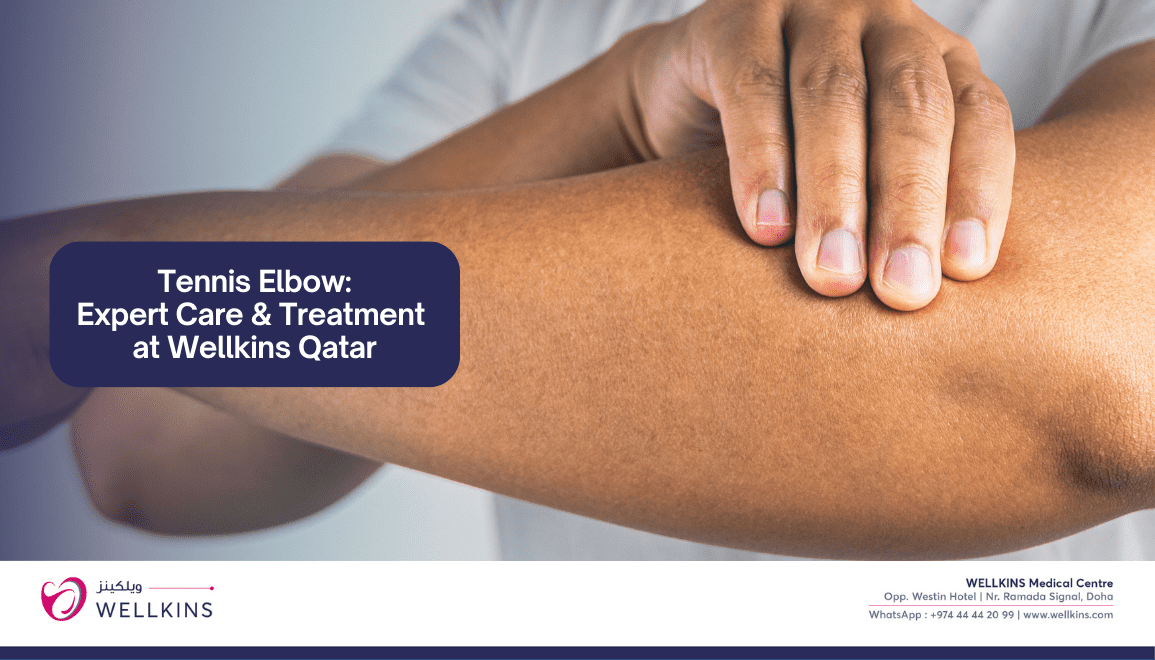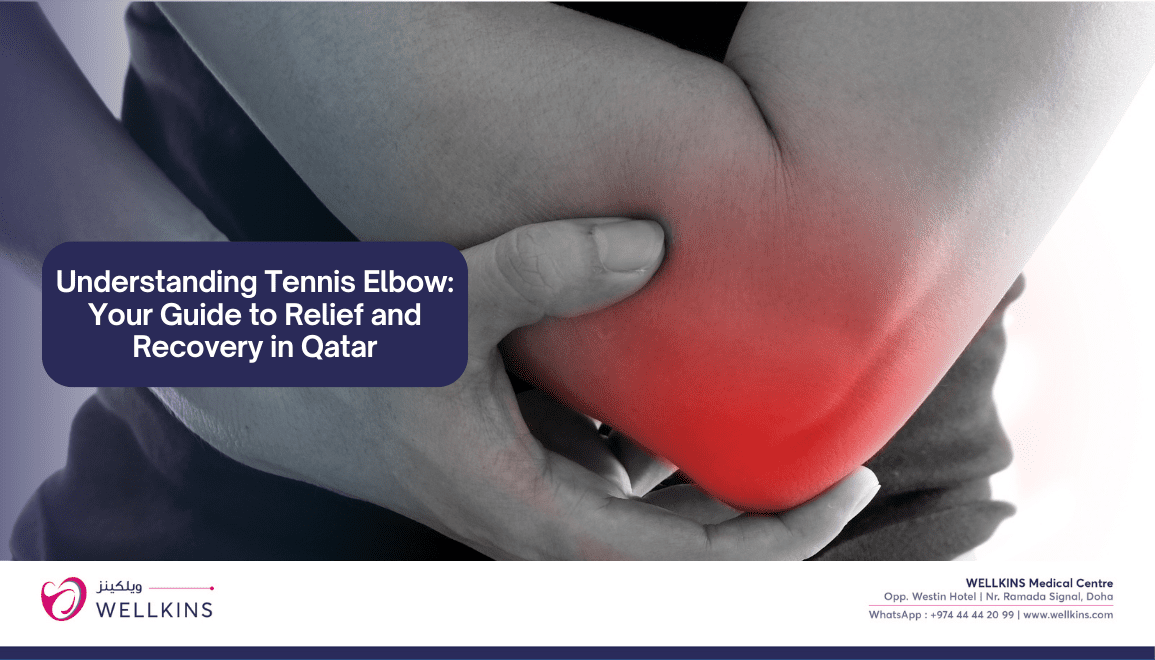Author: Dr.Reneesh (Consultant Orthopedic Surgeon – WELLKINS Medical Centre)
Tennis elbow, medically known as lateral epicondylitis, is a common overuse injury affecting the tendons in the elbow. Despite its name, this condition doesn’t only affect tennis players—it can occur in anyone who performs repetitive gripping or wrist extension movements. As an Orthopedic surgeon, I frequently treat patients with this painful yet manageable condition. In this blog, we’ll explore its causes, symptoms, diagnosis, potential complications, and long-term prognosis.
As an orthopedic surgeon, I frequently manage Tennis Elbow (Lateral Epicondylitis), an inflammation of the tendons on the outside of the elbow, often caused by repetitive arm and wrist motions. This blog provides a detailed look at its causes, symptoms, diagnosis, potential complications, and long-term outlook.
Causes of Tennis Elbow
Tennis elbow results from repetitive stress on the extensor carpi radialis brevis (ECRB) tendon, which attaches to the lateral epicondyle of the humerus.
Common causes include:
1. Repetitive wrist movements (e.g., tennis, golf, painting, typing, carpentry)
2. Improper technique in sports or manual labor
3. Overuse of forearm muscles without adequate rest
4. Age-related tendon degeneration (common in individuals aged 30-50)
5. Sudden heavy lifting or forceful arm motions
Symptoms of Tennis Elbow
Patients typically experience:
1. Pain and tenderness on the outer part of the elbow
2. Weak grip strength (difficulty holding objects like cups or doorknobs)
3. Stiffness in the elbow, especially in the morning
4. Pain that worsens with wrist extension (e.g., shaking hands, lifting objects)
5.Radiating discomfort down the forearm
Diagnosis of Tennis Elbow
As an orthopedic specialist, I use a combination of clinical evaluation and imaging to confirm tennis elbow:
1. Physical Examination
Palpation over the lateral epicondyle to identify tenderness
Resisted wrist extension test (pain confirms diagnosis)
Cozen’s test and Mill’s test (specific provocative maneuvers)
2. Imaging
X-rays – Rule out arthritis or bone spurs
Ultrasound/MRI – Assess tendon damage in chronic cases

Complications of Untreated Tennis Elbow
If left untreated, tennis elbow can lead to:
1. Chronic pain and tendon degeneration
2. Reduced forearm strength and function
3. Tendon rupture (rare but possible with severe degeneration)
4. Persistent disability affecting daily activities
Prognosis and Recovery of Tennis Elbow
The good news? Most patients recover with conservative treatment within 6-12 months. Key factors influencing prognosis:
1. Early intervention (rest, ice, physical therapy)
2. Activity modification (avoiding repetitive strain)
3. Strengthening exercises (eccentric loading rehab)
4. Steroid injections (short-term pain relief)
Tennis elbow is a treatable condition, but prevention is key. If you’re experiencing persistent elbow pain, consult an Orthopedic specialist for a tailored treatment plan. With proper care, most patients return to full activity without long-term issues.
Read more about the orthopedic services at wellkins here: https://wellkins.com/orthopedics/







